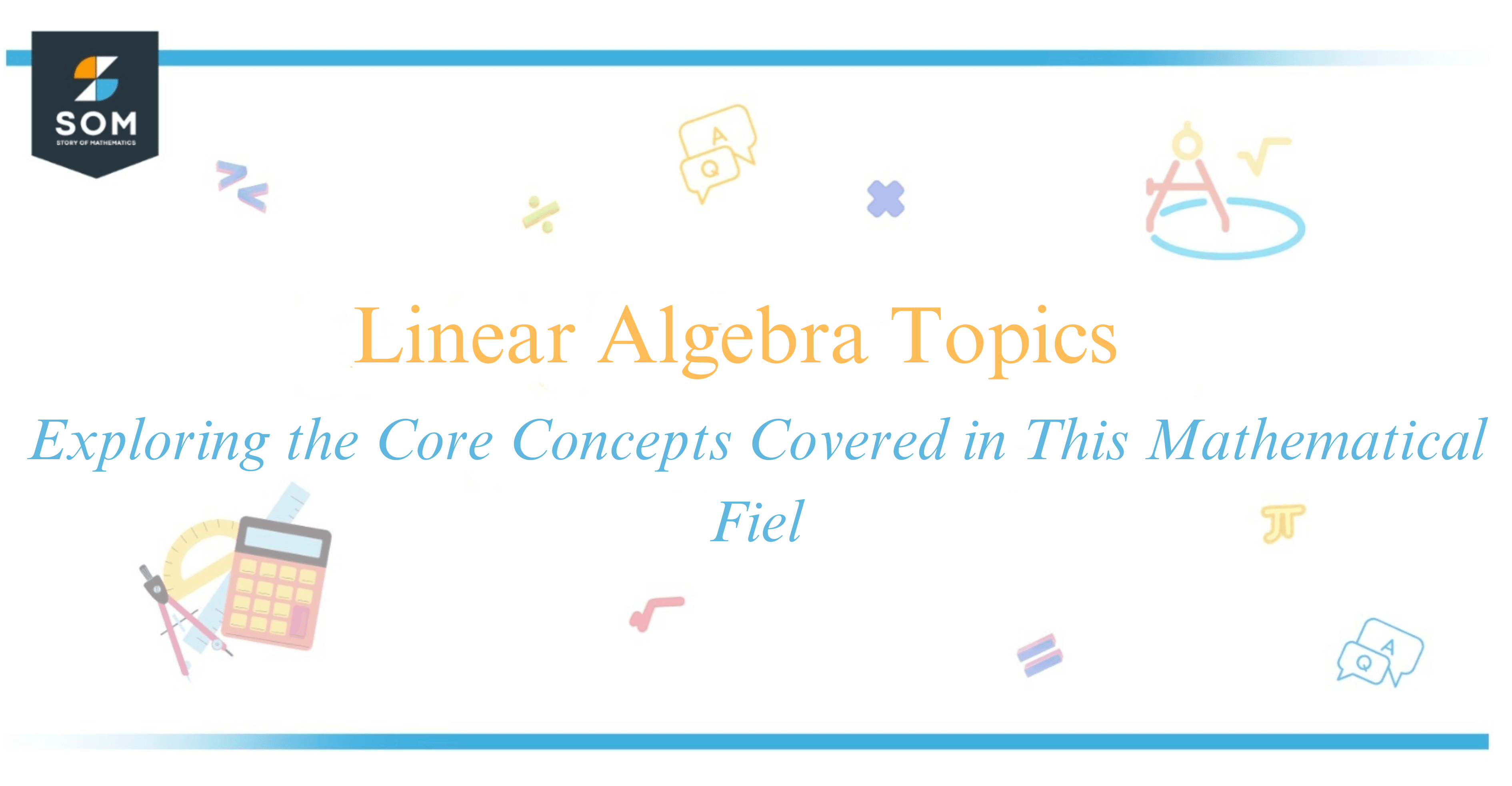
Linear algebra is a foundational field of mathematics that interlinks algebra and geometry. At its core, it involves the study of vectors, vector spaces, linear mappings, and systems of linear equations. The use of matrices is central in linear algebra; they serve as a powerful tool for solving systems of equations and performing various transformations.
I find that the topics covered in linear algebra are crucial for a wide range of disciplines beyond pure mathematics. For instance, in physics and engineering, linear algebra is employed to understand physical systems and their behaviors.
Fundamental Concepts of Linear Algebra
In my exploration of linear algebra, I find it essential to understand a few fundamental concepts integral to this field of mathematics. These topics not only serve as the building blocks for advanced study but also have numerous applications in various scientific domains such as physics, engineering, and economics.
Vectors and Spaces
Firstly, vectors are at the heart of linear algebra. They are objects that have both magnitude and direction, typically denoted as an ordered list of numbers, such as $\vec{v} = (v_1, v_2, …, v_n)$, which can be visualized in a Euclidean space. Vector spaces represent collections of vectors that can be scaled and added together, adhering to certain axioms. For example, the Euclidean vector space $\mathbb{R}^n$ has vectors with n real number components.
Matrices and Determinants
I also focus on matrices, which are rectangular arrays of numbers representing linear transformations or systems of linear equations. The determinant of a matrix, indicated as $|A|$ or $\text{det}(A)$, is a scalar value that can provide insights into matrix properties such as invertibility.
Systems of Equations
At the core of linear algebra is the study of linear equations and the methods to solve systems of these equations. I apply matrix operations to find solutions or determine the system’s consistency.
Inner Product and Orthogonality
Exploring further, the inner product spaces generalize Euclidean space concepts and involve an inner product, enabling the definition of angles and lengths. Special sets in these spaces, like orthonormal bases, are particularly interesting due to their ease of use in projections and transformations.
Finally, advanced concepts such as eigenvalues and eigenvectors arise from studying linear transformations that focus on the intrinsic properties of matrices, giving rise to the characteristic polynomial.
Advanced Topics and Techniques In Linear Algebra
One notable topic is eigenvalues and eigenvectors, pivotal in systems theory and quantum mechanics. The Spectral theorem, which connects these concepts with matrix diagonalization, is particularly fascinating as it provides significant insights into matrix operations.
The theorem’s formal statement is as follows: For a linear operator ( T ) acting on a finite-dimensional inner product space, there exists an orthonormal basis of eigenvectors for ( T ) if and only if ( T ) is normal. This plays a crucial role in numerical methods and is symbolically represented by:
$$ A = PDP^{-1} $$
Here, ( A ) is a matrix, ( D ) is the diagonal matrix of eigenvalues, and ( P ) is the matrix of corresponding eigenvectors.
In optimization, linear algebra techniques adapt to solve various problems in fields like data science and finance. For instance, Least squares and projections solve overdetermined systems, often used in regression analysis. Moreover, the Gram-Schmidt process ensures orthogonality, a concept used to describe vectors that are perpendicular to each other in vector space.
Another intersection is seen in computer science, where linear algebra grounds computer graphics, algorithms, and data structures. Error analysis and computational efficiency evaluate the precision and resource consumption of algorithms, respectively.
Linear algebra is also significant in understanding stochastic processes, essential in data science and finance. For example, Markov chains and linear programming model random processes and optimize resources. Moreover, methodologies derived from linear algebra are employed in deep learning to handle large data sets and in the mathematics of finance to model markets and portfolios.
Finally, within linear transformations and operators, I delve into functional analysis, an area that unifies linear algebra with topology and complex analysis. Concepts like functionals and orthogonality are extensively used in theoretical physics, particularly in the quantification of differential equations and analysis.
Conclusion
Through the exploration of linear algebra, I’ve gathered an understanding that spans from the fundamental operations with vectors and matrices to more complex topics like linear transformations and eigenvectors. Matrix theory is particularly significant, not just in the realm of mathematics, but also in other fields such as physics and engineering due to its efficacy in describing and solving systems of linear equations.
Regarding equations, my knowledge confirms that linear equations play a pivotal role—defined by the standard form ( Ax = b ), where ( A ) is a matrix and ( x ) and ( b ) are vectors. The solutions to these equations form the basis of many linear algebra applications.
Moreover, eigenvalues and eigenvectors provide valuable insights into matrix behavior, particularly reflected in the equation ( A$\mathbf{v} = \lambda\mathbf{v}$ ), where ( $\lambda$ ) denotes an eigenvalue and ( $\mathbf{v}$ ) denotes the corresponding eigenvector.
In summary, the depth and breadth of linear algebra encompassed in my study outline a mathematical field that is not only rigorous in its theoretical framework but is also immensely practical and applicable in various aspects of science and engineering.
